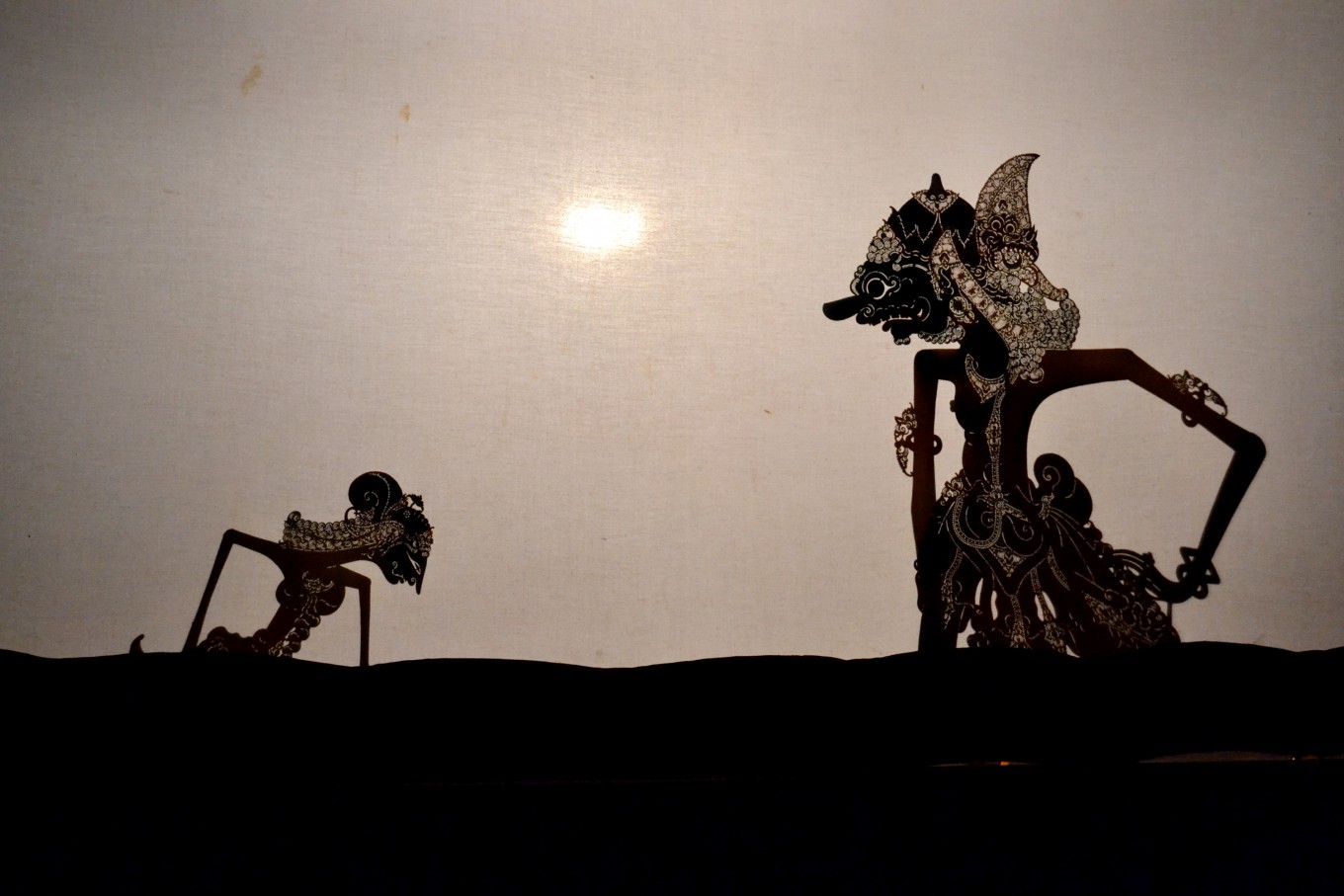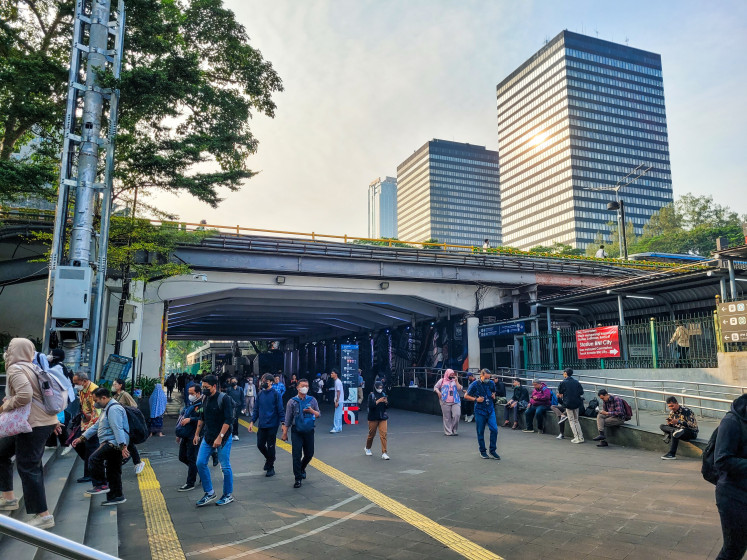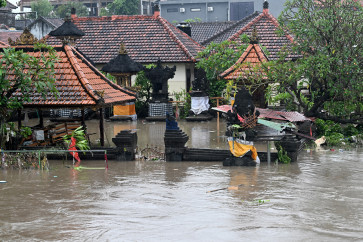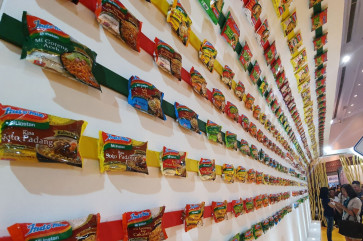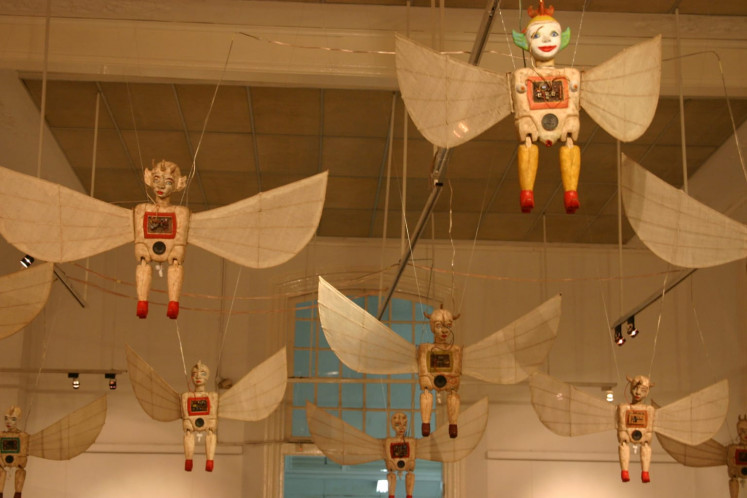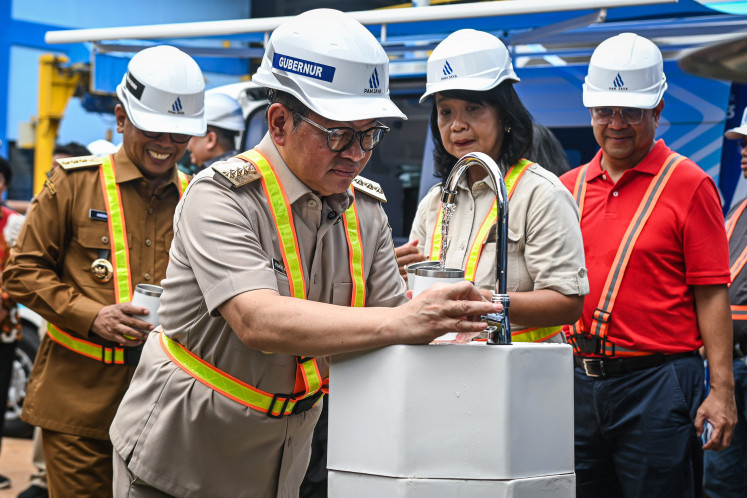Popular Reads
Top Results
Can't find what you're looking for?
View all search resultsPopular Reads
Top Results
Can't find what you're looking for?
View all search results'Wayang kulit' craftsmanship still flourishing in Wonogiri village
Change text size
Gift Premium Articles
to Anyone
Kepuhsari, a small village in Wonogiri, Central Java, is known by many as Kampung Wayang (puppet village).
The village is nestled in a hilly area locally known as Gunung Kotak (Box Mountain), around 45 kilometers from Surakarta.
Along the small rural streets of Kepuhsari, locals can be seen busily working on wayang kulit (shadow puppets). A set of humble wooden tables are usually placed on their house's terrace, serving as their workshop where they sculpt and paint dry buffalo skin sheets into characters from the Mahabharata and Ramayana stories that will be showcased in a wayang kulit performance.
The process of making the wayang kulit is known as Tatah Sungging, which begins by drying the buffalo skin and creating a drawing on it based on a certain wayang character. The process will be followed by sculpting lines to create the character's face, body, clothes and accessories, also known as Tatah. The half-made wayang kulit will then enter the Sungging process, a layered coloring technique, starting with a bold to a softer color. During this coloring process, craftsmen must skillfully paint batik patterns on the clothes of each wayang character.
Weeks, or even months, are needed to create one wayang character, depending on the difficulty of the sculpting and coloring. The characters of Punakawan, for instance, could be completed in around 1-2 weeks, while certain characters like Ksatria, Buto Raton and Gunungan could take up to one month.
One wayang character is available for a starting price of Rp 500,000 (US$35) until Rp 3 million. A set of wayang Mahabharata and Ramayana usually consist of 200 characters, of which Kepuhsari craftsmen sell them up to Rp 300 million.
Read also: International festival in Hungary features wayang kulit from Indonesia
The oldest record on wayang kulit was found on an inscription called Prasasti Balitung from the 4th Century, which described it as a sacred art performance among the royal family. During the era of the Hindu kingdom, wayang was performed based on the stories of the Mahabharata and Ramayana or Cerita Panji (Panji Stories). Since the era of the Demak Kingdom, wayang kulit was more focused on the stories of the Mahabharata and Ramayana, while Cerita Panji was usually showcased in a form of Wayang Beber, Wayang Topeng and Wayang Klithik.
For Kepuhsari residents, the skill of making wayang kulit is passed on from generation to generation. According to Totok Haryono, one of the local craftsmen, wayang crafting has existed since the 1900s.
"According to the stories from our ancestors, prior to independence, many wayang craftsmen could be found in Kepuhsari. They used to study from the Dalang [puppet master] and craftsmen of wayang kulit who hailed from Klaten," said Totok.
More than 50 wayang kulit craftsmen are actively working in Kepuhsari, although it is a side job as their main employment is in crop and animal farming.
Totok is one of several of Kepuhsari's young men who focus on crafting wayang kulit. They are also interested to learn more about the art in terms of puppet mastery and gamelan, which has received attention from the government. Recently the village has been given funds from the President to build a pendapa (hall) that will serve as a wayang learning center and a gathering place for Tetuko tourism group, an organization that promotes Kepuhsari as a cultural tourist attraction.
Elementary and junior high schools around Kepuhsari have also include Tatah Sungging as a school subject or extracurricular activity. Hence, visitors can easily find children in the village skillfully manipulating buffalo skin to create wayang.
Totok said the youth were currently focusing on learning foreign languages. "Foreign tourists visited Kepuhsari a few times, but since our foreign language skill is limited, it is a challenge for us to explain the wayang craft in detail," he added.
Other than foreign languages, the craftsmen also consider promotion on online media an important factor. For instance, social media has become a medium to promote Kepuhsari as a cultural tourist destination and platform to sell their work. Previously, wayang kulit from Kepuhsari were only bought by dalang like Ki Manteb Sudarsono, Ki Bayu Aji or Ki Seno Nugroho. Now that they have learned how to promote themselves online, the market has expanded to many groups, from collectors and academics to artists and anyone who is interested in decorating their house with wayang kulit. (kes)

